There are a lot of various parasites that can exist in the internal organs of a person or inhabit their skin and hair.Include such parasites can be helminths.
Helmintos- The general name of parasitic worms living in the human body, other animals or plants.
According to the statistical data of the World Health Organization, more than 4.5 billion people in the world are infected with several parasites, many of which are Helmi.
Official reports statistics from the Russian Federation observe an increase in the incidence of basic helmintias in some territories of the constituent entities of the Russian Federation, in particular: equinoxis, opistorchiasis.In several territories, the incidence indicators of enterobiosis and ascaridosis remain at a high level.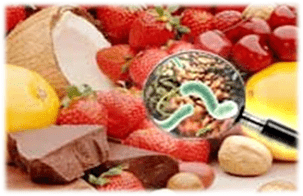 There are many ways to enter the human body, however, one of the most common forms of infection is infection through food products.Vegetables, fruits or poorly washed herbs, insufficiently fried or boiled meat, fish, poultry, incorrectly treated foods can cause infections with heline.
There are many ways to enter the human body, however, one of the most common forms of infection is infection through food products.Vegetables, fruits or poorly washed herbs, insufficiently fried or boiled meat, fish, poultry, incorrectly treated foods can cause infections with heline.
It can be infected in case of inappropriate storage of the finished product, for example, the storage of sweet cakes without protective containers can lead to infection with helminths, whose eggs can enter the finished product using flies or other insects.
Let's try to find out what helms transmitted with food and are more common in our country, and how to minimize the risk of infection with them.
Supreme (cat, liver, lanceolate, etc.)
Fasciolosis
In humans, more than 40 types of subsiders can parasitize, while the location of helminths in the body can be very different: blood vessels of liver, light and blood.
The hepatic borrower is the causative agent of fascioliasis and affects the liver and gallbladder.
A person is infected when orchards are used to water open pond water.
Patients have general symptoms of poisoning: weakness, decrease in appetite, nausea, headaches.Allergic reactions can occur in the form of itching in the skin or urticaria, asthmatic attacks.
An increase in parasite size can lead to a violation of bile flow in the duodenum and the appearance of mechanical jaundice signs.Patients have pain in the right hypochondrium.Next, you can see the bitter of the skin and the feces are discolored.
Opistorchoz
The causal agents of opistorchiasis are a cat salary.
Human infection occurs when raw fish, not sufficiently thermally processed or salty.
The clinical manifestations of opistorchiasis are characterized by a significant variety.It depends on the individual characteristics of the body, as well as the intensity and duration of the infection.The number of parasitic worms can fluctuate in a large range: from individual parasites to several tens and even hundreds.Repeated use of infected fish leads to an increase in infection and aggravation of clinical manifestations.Clinically, the disease can be accompanied by an increase in temperature in patients, the appearance of urticaria, itchy skin, muscles and joint pain.Patients may have pain in the right hypochondrium, a feeling of heaviness in the stomach, nausea.
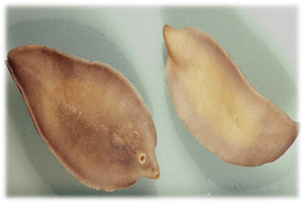
Paragonism
The main causal agent of paragoniosis in humans is a pulmonary bacon.
The causal agent of the disease enters the intestines of a person when crustaceans who live in areas are eaten, where there is an approach to the disease, and migrate through the body: they penetrate through the intestinal wall towards the abdominal cavity, and then enter the pleural cavity through the diaphragm, then towards the lung tissue.Longer larvae can also penetrate other organs and tissues.The location of the parasite in the brain is especially dangerous.The promotion of the parasite occurs in a third of infected people and is often the cause of death.
In the early stage of the disease, when pulmonary bacon only migrates throughout the body, the disease is almost asymptomatic.Sometimes, small allergic reactions, skin itching are possible, less frequently: abdominal pain, jaundice.As soon as the parasite reaches the final location, patients have pronounced symptoms of lung damage: constant cough with abundant sputum, severe pain in the chest.During the disease, several complications may occur, for example, pneumothorax - air that enters the pleural cavity.Very often in patients, pneumonia or pleurisy are developed (inflammation in the pleural cavity).
Tape worms
The tape worms (cestodes): a group of parasitic worms that have a tape form and consists of a different number of anatomically isolated segments: swallow.The dimensions of the worms vary from a few millimeters to 10-15 meters or more.In the front of the worm, there is the head, which is an organ of the parasite to the human intestinal mucosa.The Helmint is fixed on the intestinal wall using different devices: rounded suction cups or in the shape of a clenching, hooks.
Dipilobotriosis
The causal agent of the Dipilobotriosis is a wide tape, which lives in a person's intestines.
The tape is wide range of a length of 12-15 meters or more, and the number of segments-severals thousands.
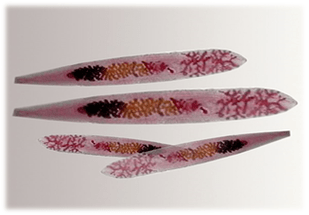
Human infection occurs when it is not thermally processed, freshly frozen, poorly chopped, badly withered and manure, crushed fish, as well as when newly salty fish is used.The clinical image is due to the mechanical effect of the helminto on the intestinal mucosa and the absorption of nutrients.Patients with dipilobotriosis complain of pain and rumble in the stomach, nausea, vomiting.There is often a stool disorder.With the simultaneous parasitization of several worms, an intestinal obstruction can occur.
The tape adsorizes vitamin B12 on its surface, and this leads to a violation of red blood cell formation in the patient body and the appearance of anemia.Patients have pale skin, weakness, discomfort.
Toniarychosis
The causal agent of the shadow is a bullman, which is located by a person's thin intestine and can reach a length of 10 meters.
People are infected with youryraynchos when they eat lived meat (poorly fried or cooking, rope, minced meat).
Tusirincosis often proceeds asymptomatic and is detected by chance when the patient sees in their stool a segment of parasites or detects them in bed or in clothes.During the interrogation, the patient may complain that he recently feels weakness, greater fatigue, sleep disorders, leather to rumble in the abdomen, pain in the venerable region, vomiting, rape of the chair.
As a complication of Tusirincosis in patients, an attack of acute appendicitis or intestinal obstruction may occur.
Teniosis
The causal agent of tiniosis is a pork chain that is located in a person's thin intestine and can reach a length of 3 meters.
Pork had be located in several organs and tissues.
Relatively favorably albicchosis with location in subcutaneous tissue or skeletal muscles.
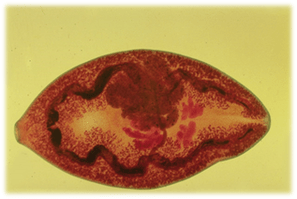
With the ocular cystisca, patients complain about distorting the shape of objects, lacrimation and a gradual decrease in visual acuity.
Cystisis of the brain is difficult and often ends with a fatal result for a sick person.
Equinocosis
The causal agent of equinococcosis is an equinococcus, which is located in the liver and lungs and can reach a length of 5-6 meters.
For a person, the infection with Echinococcus is possible with the use of crops, vegetables or unwashed garden fruits, which could be parasite eggs.
The clinical manifestations of the disease depend on the size, quantity and location of Echinococcus bubbles in the patient's body.With the location of Echinococcus in the liver, patients complain about gravity and pain in the right hypochondrium, as well as the bitter of the skin as a result of a violation of the exit of the bile.The large cysts, pressing the door vein, lead to a violation of the venous blood exit flow of the intestines and the appearance of Ascita: the accumulation of liquid in the abdominal cavity.
When located in the lungs, it is dry cough and pain during breathing.
Alveococosis
The causal agent of alveococosis is alveococcus, which affects the liver with possible metastasis after several other organs.Alveococcus size does not exceed 5 mm.
A person is infected when he eats unwashed wild herbs and berries, as well as eating products, washing that is carried out in an open pond.
At the early stage of the disease, patients are concerned about weakness, discomfort, headache, skin's itching.In the future, complaints of a feeling of heaviness may appear in the correct hypochondrium;Vomiting, diarrhea, swelling, especially after eating fatty foods.
The patient's condition worsens significantly when Alveococcus enters other organs.The most dangerous metastasis in the brain, kidneys, lungs.In the context of inhibition of the patient's immune system, bubbles are very often suppurate, abscesses occur in internal organs, which further aggravates the patient's condition and may be the cause of death.
Round worms (nematodes)
Round worms are one of the most numerous types of worms.Diseases caused by round worms are called nematodosis.
The Nematod body has a spindle or threaded shape, ties at the ends, rounded in the cross section, the size of the worm round can be different, but more often does not exceed 0.5 meters.
HOLDER
The causal agent of ascariasis is Ascaris, parasitating in the small intestine of a person.The size of mature worms can reach 40 cm.
The main and unique mechanism of human infection with ascaridosis is fecal-oral.Uncardious vegetables or fruits, water, home items, dirty hands are the main transmission factors.And if you remember the mechanical carriers of eggs: insects, then the list of products in which Askaride eggs can be extremely large.
The clinical manifestations of ascariasis depend on the amount of parasites in the small intestine.Most of the time, an individual lives in a person's intestines: then the disease is often asymptomatic.
In the presence of several individuals in the body, patients have signs of body poisoning with worms products.Patients complain of dizziness, headache, sleep disorders.There is a feeling of heaviness in the stomach, unstable chair.By parasitizing a large amount of ascarido, symptoms of intestinal obstruction may appear.
Enterobiosis
The causal agent of enterobiosis is the cuts, which are located in the intestines, and can reach the size of up to 1 cm.
The only form of infection with cuts is fecal-oral.Unchanged vegetables and fruits, home items, dirty hands are the main transmission factors.Insects can also be food cut puppies.
By parasitizing a small number of parasites, an asymptomatic course of the disease is possible, while in the presence of a large number of parasites, itching is observed in the anus, patients are possible in abdominal pain, nausea and feces disorder.
During the migration of females, females can penetrate the genitals with the subsequent occurrence of the inflammatory process in them.
Tricinosis
The causal agent of trichinelosis is Trichinella, which is located in the small intestine and the skeletal muscles of the host.
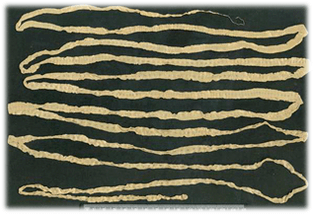
Trichinella is one of the smallest nematodes.Parasites sizes barely reach 4 mm.Adult tricinelos parasitize in the small intestine, and in the larval stage in transverse scratched muscles, exclusion is heart muscle.
A person is infected, using infected animals: wild boars, pigs, bears, seals.For infection, it is enough to use 30-50 g of trichinelle meat.Most of the time, a person is infected with the use of meat, fat, ham, bacon, breast, as well as sausages made of body bodies.
Clinically, trricinelosis is manifested by general symptoms of discomfort, headache, fever at 38-39 ° C.
A little later, a pronounced edema of the eyelids or the whole face appears, sometimes the limb swelling occurs.These symptoms add muscle pain: calf, chewing, lumbar.Little by little, muscle pain intensifies, extends to new muscle groups.The patient's movements become more and more limited, sometimes until complete immobilization.
The poisoning of the body of the patient with the products of the life of the parasite leads to damage to the heart, to the lungs, to the brain and can be the cause of the death of the patient.
Helmintiasis prevention
To prevent infection with helminths, several rules must be followed, namely:
- Observe the simplest rules of personal hygiene, including washing your hands after the street, before meals, after contact with money and animals.
- Try to avoid contact with street animals, and if you have a pet, regularly visit a veterinary clinic.It is imperative to carry out animals deworming courses with the frequency recommended by the veterinarian.
- Wash fruits, vegetables, berries, even if they are from your personal plot.
- Do not drink water and do not wash dishes and food with water, whose security is not safe.
- Eat only products that have passed the necessary heat treatment.
- Provide insect protection in your kitchen.For example, to seize the window openings, cover dishes ready to use.
- Do not eat dry or dry home fish.
- Do not use homemade salty butter.














